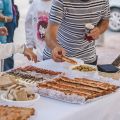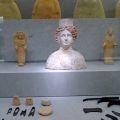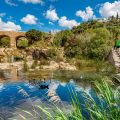Culture and tradition: discover the most authentic side of Ibiza with the family
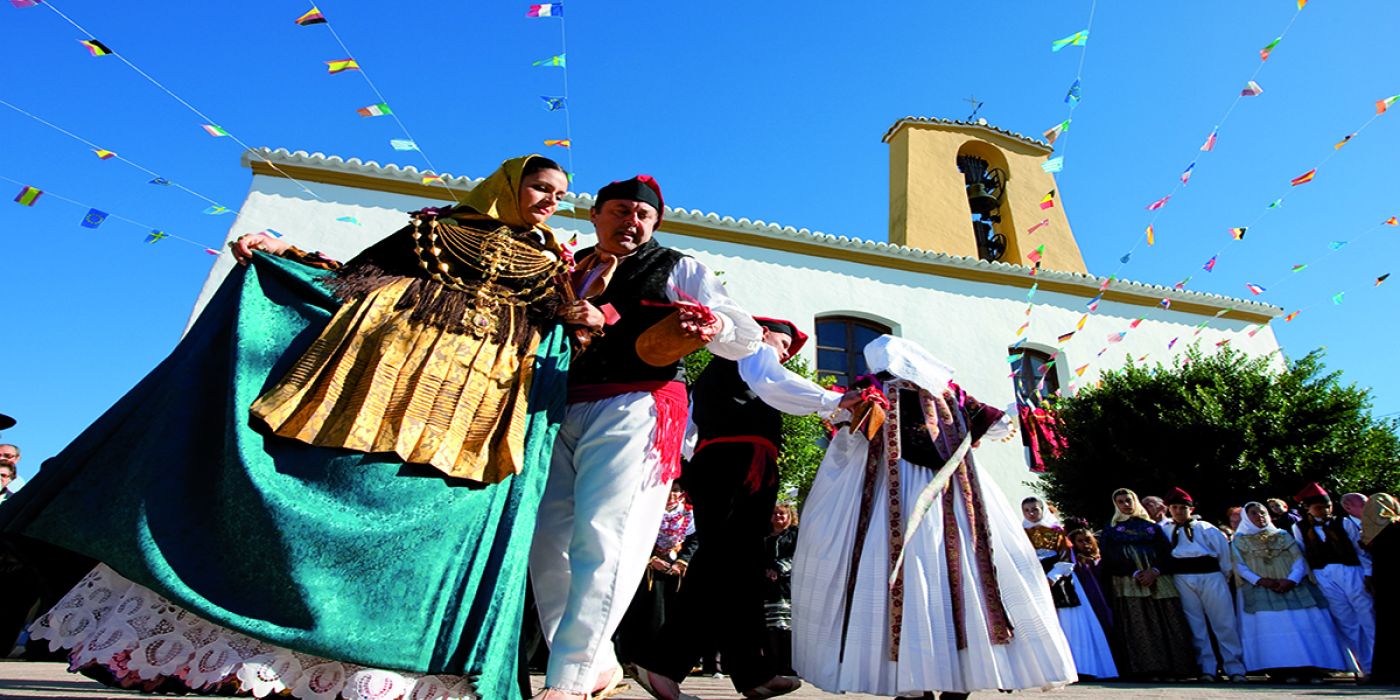
Just as its permeable clay and limestone soil filters the water, Ibiza has acted as a filter for the cultures of the peoples who have inhabited it to create a unique identity that lives on in its folklore, architecture and traditional cuisine. During your holiday you can get a glimpse of the most authentic side of Ibiza as you drive round the island, have a meal in its traditional restaurants and join in the patron saint day festivities in its towns and villages.
Ibiza and its folklore: dance, costumes and music
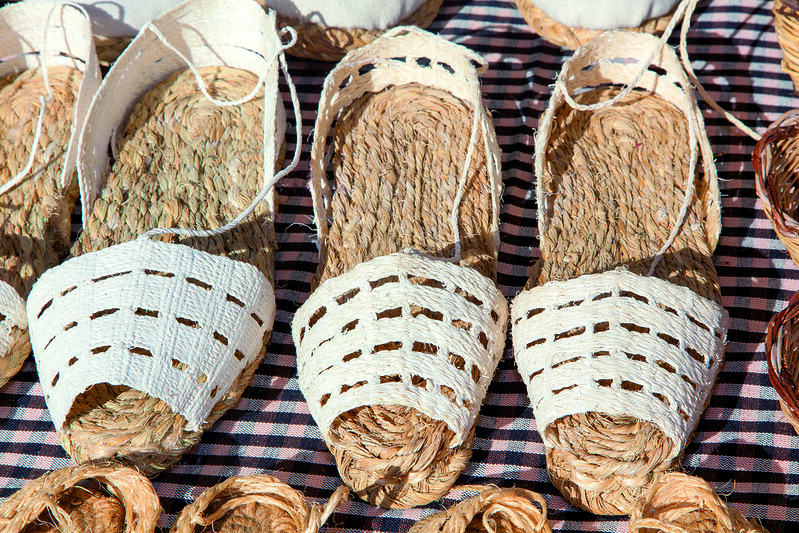
Phoenicians, Carthaginians, Romans, Arabs, Visigoths, Catalans: all the different cultures that have passed through the island have left their mark on Ibizan folklore, whose most characteristic feature is the ball pagès (country dance), the traditional courtship dance performed in the Ibizan countryside since ancient times and whose origins are still not fully known. This dance took place at weddings, after the end of the harvest and, of course, at the patron saint festivities. It is easy to enjoy this dance during the summer holidays, when ball pagès exhibitions are held during local festivities or at weekly events, such as those held on Thursday afternoons in the church of Sant Miquel.
The typical Ibizan dance has different variations, although in all of them the woman dances formally around the man, keeping her gaze fixed on the ground while she traces circles around him with short, delicate steps. Meanwhile, the man performs large jumps, lifting one leg while playing large castanets or castanyoles. The ball pagès is also an example of traditional Ibizan music, based on local sounds with Arab and Catalan influences. The typical musical instruments are the drum, the flute, the espasí, a sword-shaped piece of metal, the castanyoles and the xeremía, a wind instrument consisting of two reed pipes.
Traditional Ibizan dress
Typical Ibizan dress reflects both the functionality of everyday work in the fields and the cultural symbolism of the island, especially in the case of the women's costume for feast days. This is made up of several superimposed pieces, including a white cotton blouse, a long black, white, blue, brown or green skirt under which there are several layers of petticoats, a headscarf and a shawl or mantilla. This outfit is completed by the emprendada, an extraordinary piece of jewellery full of symbolism and of ancient origin, consisting of a large set of necklaces made of silver and coral or gold, from which hangs a reliquary with the image of a virgin. You can also see the anellada, a set of gold rings worn on the fingers and presented by the man to his fiancée at the time of betrothal.
The men's costume, on the other hand, is simpler and more functional and consists of a white linen shirt, white trousers, a red sash, a silk neckerchief, a felt hat and a waistcoat decorated with a hanging silver boutonniere. In winter, the trousers are black and a short jacket of the same colour is added. Both men and women wear espardenyes, handcrafted shoes made of American aloe and esparto grass.
Ibizan cuisine: tradition at the table
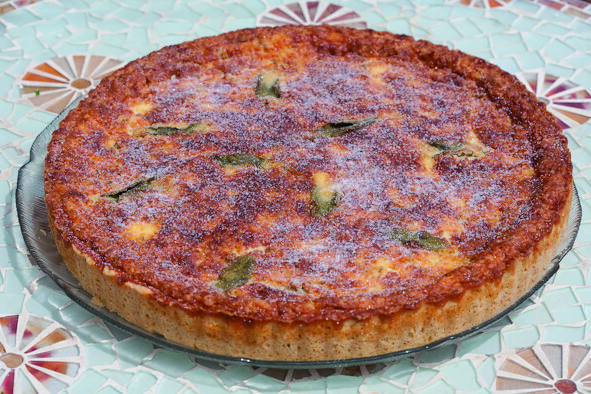
Ibizan cuisine and the products that are grown and fished in the area are one of the island's great cultural assets. Influenced by its location in the Mediterranean, the history of Ibiza and the customs of the different cultures that have passed through it, the island's cuisine stands out for its use of fresh, local produce, intense flavours and a simplicity that harks back to the ancient times of scarcity.
The flavours of the countryside and the sea
Ibizan cuisine abounds in fish, especially rock fish, and seafood: grouper, red mullet, cuttlefish, squid, red prawns, lobster, skate, monkfish, picarel or gerret, wrasse or raor, dentex, red snapper, roach (scorpionfish), John Dory, sea cucumber or espardenyes, amberjack or lemon fish, gilthead bream, sea bass, octopus, etc. They are prepared grilled, baked or in traditional stews, such as the popular bullit de peix (boiled fish with potatoes served with a light garlic mayonnaise sauce and accompanied by arroz a banda), borrida de ratjada (skate stew), squid stuffed with sobrassada or fried octopus or cuttlefish.
There are also many dishes in which garden produce plays a leading role, such as the ensalada payesa (made with the tender and tasty red potato from Ibiza), broad bean stews or coca de pimientos, for example. And, of course, there are the dishes and products made from pork, such as arroz de matanzas (slaughter rice) or sofrit pagès, a hearty winter dish made with chicken, lamb and pork, potato and sobrassada and Ibizan butifarró sausage.
A sweet finish
And to round off this brief tour of Ibiza's culinary culture and tradition, a dessert. During your holiday on Ibiza, you have to try flaó, a distinctive cake made with sheep's cheese and mint; greixonera, a type of pudding made with ensaimadas, and orelletes, a typical festival sweet with the aroma of lemon and aniseed. And for a toast to the summer, a glass of hierbas ibicencas, a traditional digestive liqueur made with around 20 local ingredients, such as rosemary, thyme, rue, mint, juniper and lemon leaves.
Ibiza's architecture: age-old wisdom

Traditional Ibizan architecture is characterised by its adaptability to the natural environment and its slow development over the centuries. The materials and shapes reflect both its oriental influences and the needs of rural life on the island, with an emphasis on simplicity, functionality and protection against the hot, arid climate. As you will see on your walks around the island, the materials used are natural stone, juniper wood and lime and plaster, which were used to clad the walls for their insulating and disinfectant properties.
In terms of construction, the traditional Ibizan country house has very thick walls, which insulate the interior of the house from the high temperatures of summer and the cold of winter; flat roofs made with layers of dried sea grass stems that were used both to dry fruits and to collect rainwater through channels; small windows to keep the interior cool, and a modular layout that enabled the house to be extended as annexes were added to the main module to meet the family's new space requirements.
The porxo (porch) the archetypal Ibizan living room
The country house was built around the porxo, the main room that served as a vestibule, workspace and meeting place. Generally facing south and rectangular in shape, this room was accessed directly through the main door of the house. It gives onto the kitchen and the cases de jeure, i.e. the bedrooms. Prosperous families built an upper floor and, in it, the porxet de dalt, a gallery - usually with three arches - where fruit and vegetables were dried. The country house was completed with other annexed areas, such as the corrals, the cart and tool shed, the trull (the oil press) and the casa del vi (the wine cellar). Make sure you visit the Ethnographic Museum of Ibiza in Santa Eulària and Ca'n Andreu des Trull in Sant Carles to see all the typical features of the traditional Ibizan house from the inside.





